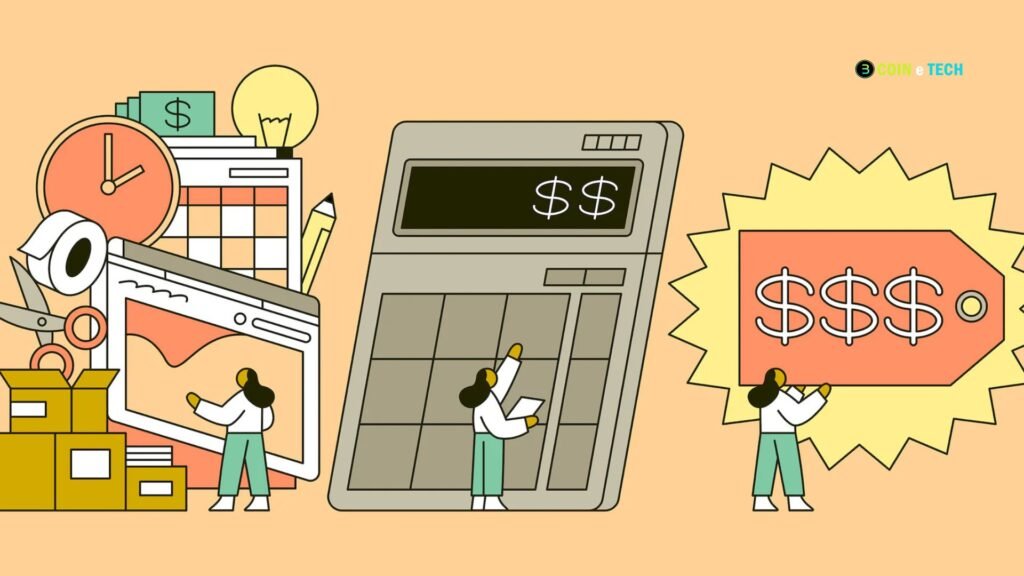The cost-price analysis is an important tool for businesses to manage their money because it helps them figure out how to best-set prices. Companies that understand cost-price analysis can make more money, run their businesses more efficiently, and make smart business choices. This piece details what cost-benefit analysis is, its parts, how it works, and how to do it right.
What is Cost Price Analysis?
The process of cost-price analysis is figuring out how much it costs to make a product or offer a service. It involves finding out the total cost of production, which includes both direct and indirect costs, and then using that knowledge to set a price that makes money while still being competitive in the market. Businesses in many fields, from manufacturing to service, need this research very much.
Key Components of Cost Price Analysis

- Direct Costs: These expenses can be directly traced to producing a specific good or service. Examples include raw materials, labor costs, and any other expenses directly associated with manufacturing.
- Indirect Costs: Also known as overhead costs, these are expenses that are not directly tied to a single product but are necessary for production. This can include utilities, rent, administrative salaries, and marketing costs.
- Fixed Costs: These costs remain constant regardless of the level of production or sales. Examples include rent, insurance, and salaries of permanent staff.
- Variable Costs: These costs fluctuate based on the level of production. For instance, if a company produces more products, it will incur higher costs for materials and labor.
- Total Cost: This is the sum of all direct and indirect costs, fixed and variable, associated with producing a good or service.
- Desired Profit Margin: This is the percentage of profit that a business aims to achieve on each product sold. Setting this margin based on industry standards and business goals is essential.
Importance of Cost Price Analysis
The cost-price analysis serves several crucial purposes for businesses:
- Profitability Assessment: By understanding the costs involved in production, businesses can assess their profit margins and determine if they are pricing their products appropriately.
- Pricing Strategy Development: Cost price analysis provides the necessary data to develop effective pricing strategies that align with market demand and competition while ensuring profitability.
- Budgeting and Forecasting: This analysis helps businesses create accurate budgets and forecasts by providing insights into potential cost fluctuations and their impact on profitability.
- Cost Control: Understanding cost structures enables businesses to identify areas where they can reduce expenses, thereby improving their bottom line.
- Informed Decision-Making: A clear picture of costs empowers management to make informed decisions regarding product development, market entry, and resource allocation.
Methodologies for Cost Price Analysis
Cost-price analysis can be done in a number of different ways, which helps businesses set correct prices based on the costs of production. Break-even analysis is a popular method that finds the point where total costs equal total revenue. This lets businesses know how many sales they need to make in order to avoid losses. Cost-plus pricing raises the price of an item by a certain percentage to ensure the business makes money. This method is popular in manufacturing.
Target Costing looks at the market price and determines how to keep production costs low enough to meet that price while still making a profit. Activity-Based Costing (ABC) divides prices into activities that go into making something, giving a thorough picture of how resources are used. Last but not least, Variable Costing focuses on looking at the contribution margin and separating variable costs from set costs. These methods give companies adaptable, data-driven ways to set prices and handle costs well, ensuring a balance between charging low prices and making a profit.
Steps to Conduct a Cost-Price Analysis
- Identify Costs: Gather data on all direct and indirect costs associated with production. This includes labor, materials, overhead, and any other relevant expenses.
- Categorize Costs: Classify costs into fixed and variable categories to understand how they affect production levels.
- Calculate Total Cost: Sum all identified costs to determine the total cost of producing the product or service.
- Determine Pricing Strategy: Decide on a pricing strategy based on market analysis, competitor pricing, and desired profit margins.
- Set Price: Establish the final selling price based on the total cost and the chosen pricing strategy.
- Monitor and Adjust: Regularly review costs and pricing strategies to ensure they remain aligned with market conditions and business objectives.
Challenges in Cost Price Analysis
Businesses have to deal with many problems when they use cost-price research. One big problem is getting accurate data; it can be hard to get accurate data on both direct and indirect costs, especially in complicated production settings. Cost data that isn’t right can cause bad pricing decisions, hurting profits. Changing market conditions are another problem. When the cost of materials, labor, or other inputs changes, the research must always be updated.

Also, allocating overhead costs can be tricky because indirect costs must be fairly spread across goods or services, which can be hard for companies offering more than one product. Another problem is keeping costs low without sacrificing quality. Cutting costs too quickly can hurt product quality and customer happiness. Lastly, it can be hard to predict future costs and change pricing methods to match because of economic changes or supply chain problems. Getting past these problems is necessary for accurate cost estimates and keeping pricing strategies that are competitive and successful.
Benefits of Effective Cost Price Analysis
- Improved Profitability: By accurately assessing costs and setting appropriate prices, businesses can enhance their profitability and financial sustainability.
- Competitive Advantage: Understanding costs enables businesses to price products competitively while ensuring margins, providing an edge over competitors.
- Enhanced Decision-Making: Cost price analysis equips businesses with the information needed to make strategic decisions about product lines, resource allocation, and market positioning.
- Resource Optimization: Identifying cost inefficiencies allows businesses to optimize resources, reduce waste, and improve operational efficiency.
- Strategic Planning: Effective cost-price analysis supports long-term strategic planning by providing insights into market trends and potential profitability.
Also Read: Price Analysis for Sole Source: Non-Competitive Procurement
In summary
If you want your business to succeed in today’s cutthroat economy, you must do a cost-benefit analysis. Profitability, decision-making, and operational optimization can all be enhanced when firms have a firm grasp of their production costs and price their goods and services appropriately. The advantages of efficient cost price analysis considerably surpass the disadvantages, even though there are some. Achieving long-term success and sustainability in an ever-changing market requires organizations to have a strong grasp of cost price analysis as they negotiate the intricacies of cost structures and pricing strategies. Better financial management practices put businesses in a better position for future growth when they apply the approaches and tactics outlined in this article.






